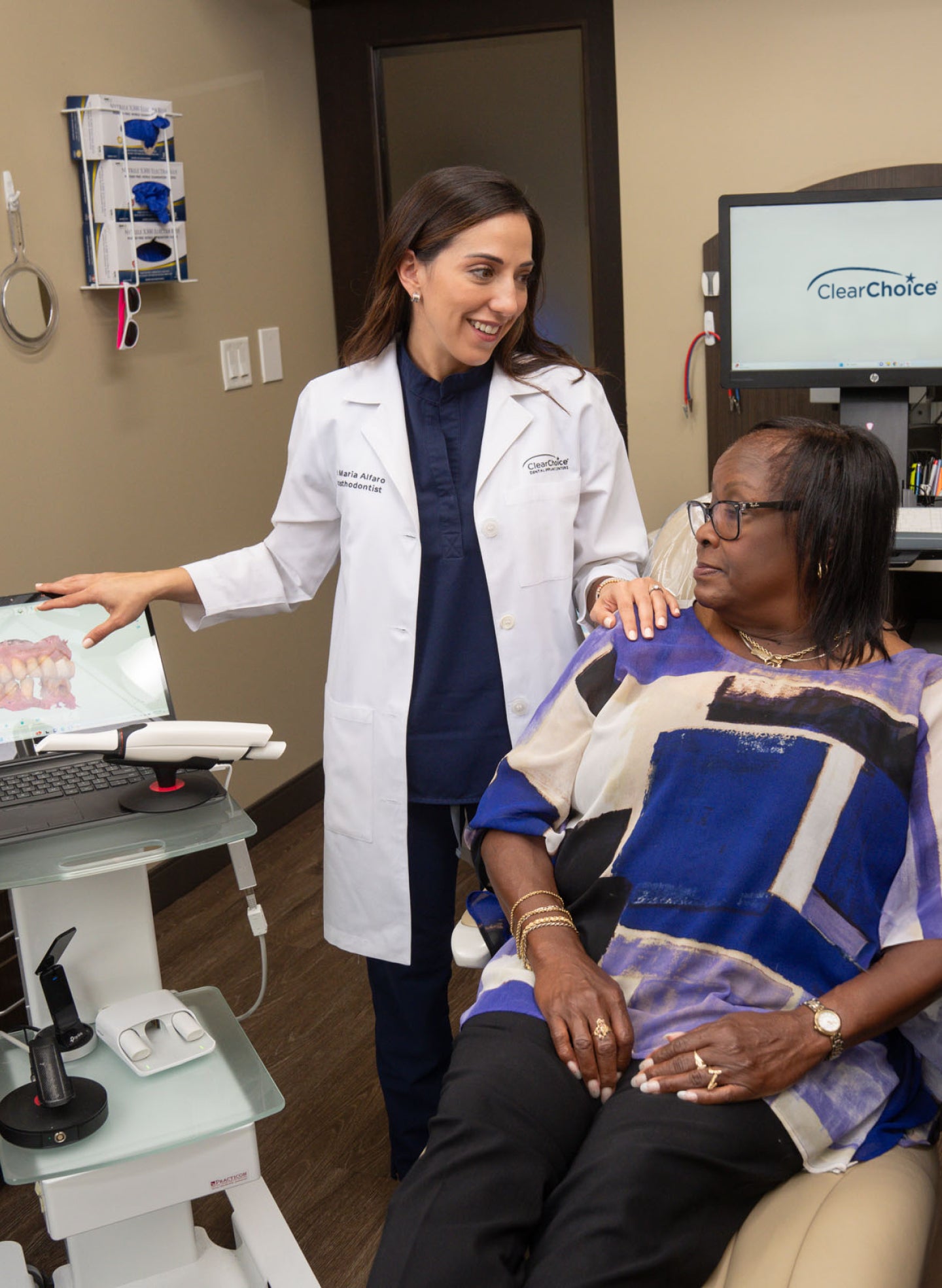What is osseointegration?
Learn how osseointegration helps dental implants fuse to the jawbone, ensuring stability and long-term success.

Dental implants offer a safe, stable, and long-lasting solution to tooth loss. If you undergo the procedure, you’ll go through the process of osseointegration. Put simply, osseointegration secures your implants into place, helping them become a natural part of your mouth.
Let’s take a closer look at how osseointegration works and what you can do to promote its success. For questions related to osseointegration or dental implants in general, don’t hesitate to schedule a free consultation at your nearest ClearChoice Dental Implant Center today.
Understanding osseointegration
The term “osseointegration” stems from the Latin word “os,” which means bone, and “integration,” which describes joining and plays a pivotal role in dental implant surgery.
Unlike other tooth replacement solutions, dental implants integrate with your bone tissue and unite with your jaw. This allows for optimal stability and allows your new tooth to look and function like a natural one.
The osseointegration process stimulates your body’s natural healing process and begins immediately after the dentist places your implant into your jawbone. Your bone cells will gradually grow around the implant and create a durable bond that helps the implant stay in place and in many cases, last for a lifetime with proper care and maintenance.
How long does osseointegration of dental implants take?
It usually takes anywhere from 2 to 4 months for the implant to fuse with your jawbone. Factors like the location of your implants and the overall health of the jawbone can impact your exact osseointegration timeline. As you go through osseointegration, it’s a good idea to visit the dentist for check-ups to promote a healthy healing process and address any questions or concerns you might have.
Tips for successful osseointegration
These tips can help increase your chances of success during osseointegration and, in turn, improve the outcome of your dental implant procedure:
Take prescribed antibiotics
Your dentist may prescribe antibiotics for your dental implant surgery. Be sure to take them as directed to help your implant integrate with your jawbone safely and effectively.
Maintain good oral hygiene
You’ll need to care for your dental implants as if they are natural teeth. Brush them at least twice daily with a soft-bristled toothbrush, and floss on a daily basis.
Avoid hard and sticky foods
Hard foods like chips and nuts can place unnecessary pressure on your dental implants while sticky foods such as taffy and caramel may get stuck in the area. Stay away from both hard and sticky foods to avoid irritation, infection, and other disruptions with the healing process.
Attend follow-up appointments
Visit your dentist on a regular basis for routine check-ups. Your dentist can check the health of your dental implants and provide you with individualized recommendations to help promote their longevity and optimal oral health.
Avoid smoking
Avoid smoking before your dental implant procedure and during osseointegration. Ideally, you’d also refrain from smoking after getting implants, as smoking can lead to bone loss and hinder the durability of your implants.
When to contact your doctor
Most of the time, patients go through osseointegration without any issues. However, there are some instances that warrant medical attention. If you have persistent pain, bleeding, or swelling that lasts longer than 10 to 14 days, contact your dentist as you may have an infection. Other signs that you need to see a dentist include gum inflammation, chewing challenges, and implant loosening.
Learn more about osseointegration and dental implants
Osseointegration enhances the functionality and stability of dental implants. By following your dentist’s instructions and caring for your implants and overall health, you can increase your chances of long-term success.
ClearChoice works with third-party financing vendors that can help make the cost of dental implants more manageable. For more information about dental implants and osseointegration, contact your local ClearChoice Dental Implant Center.
Osseointegration FAQs
How do I know if dental implant osseointegration is complete?
Osseointegration should be complete 2 to 4 months after dental implant surgery. You should know if healing is complete, if the implant is stable and pain-free after that time period.
What is the success rate of osseointegration?
Osseointegration has a very high success rate. This is particularly true when dental implants are placed by a highly skilled and experienced dentist on patients who are good candidates for them.
Schedule Free Consultation>
